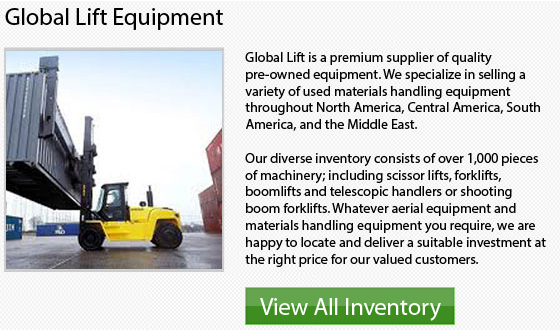
The following add-ons are useful for narrow aisle lift trucks:
Side shift: Side shift is an option that allows the movement of the load laterally without having to move the model. This enables loads to be accurately positioned.
Tilt mast: The tilt mast option enables the forks to shift backwards and forwards. This is great in cases where loads aren't completely level. To be able to gain more stability when transporting a truck that is loaded, the mast can be tilted backwards.
Extendable forks: The option of extendable forks helps the "reach" of the forklift to extend for stacking pallets one in front of the other, referred to as "double-deep" loading.
Operator platforms: Operator platforms allow some NA forklifts to lower and raise the operator whilst the forks are being lowered or raised. This provides optimum control and visibility while dealing with cargo at heights of 6 m to 9 m.
Forklift on a Ramp
Operators have to be well taught and must be tested and licensed. It is very important for anyone operating a lift truck to be educated about safety rules and concerns. Operators must know how to make adjustments in situations where the load weight alters the center of gravity or on uneven surfaces. Safety rules include the safe use of a forklift on a ramp, which is frequently happening as the driver would usually need to drive down and up ramps to be able to unload and load containers.
Guidelines for Using a Forklift on a Ramp
1 When approaching and driving up and down the ramp, drive at slow speeds. The risk of mishaps is increased while driving fast because this can upset the machine's center of gravity.
2 When not carrying a load, drive the lift truck in reverse when moving up an incline on a ramp.
3 Drive forward when moving down an incline on the ramp with no load.
4 While moving down or up a ramp when carrying a load, tilt the forks back a little to shift the load's center closer to the front of the machinery.
5 In order to make the load more steady, drive forward up a ramp when carrying a load.